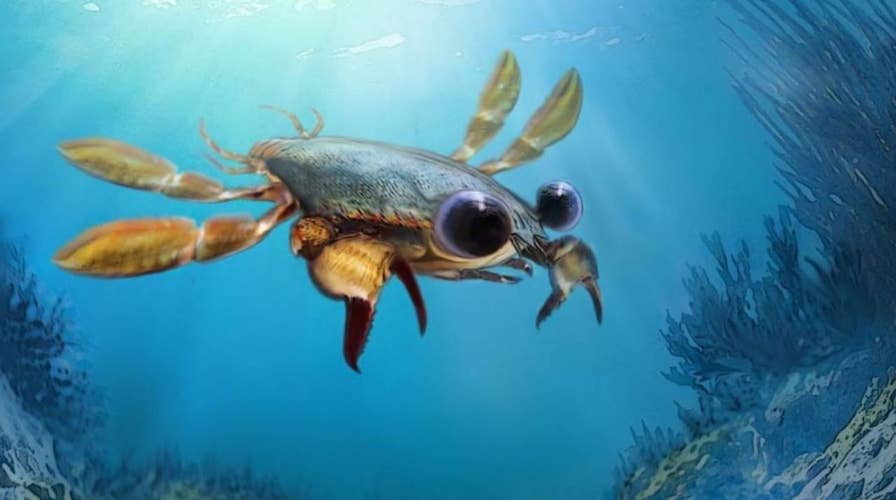Scientists discover bizarre 'nightmare' crab with cartoon eyes
Its watching you, this ‘nightmare’ crab will haunt your dreams.
Scientists have discovered an ancient species of crab with bizarre, cartoonishly large eyes that roamed the sea 95 million years ago.
The unusual, ultra-small creature called Callichimaera perplexa - which stands for perplexing beautiful chimera - doesn't seem to have much in common with modern-day crabs.
According to researchers, it had a lobster-like shell, flattened legs that look like paddles and gigantic eyes protruding from its head.
"Callichimaera perplexa is so unique and strange that it can be considered the platypus of the crab world," said Yale paleontologist Javier Luque, the lead author of the study, in a published statement. "It hints at how novel forms evolve and become so disparate through time."
The crab's body was about the size of a quarter coin. If it had been human, its eyeballs would have been as big as soccer balls.
INVENTOR TO CROSS ENGLISH CHANNEL ON JET-POWERED HOVERBOARD

Life reconstruction of Callichimaera perplexa: The strangest crab that has ever lived. Credit: Oksana Vernygora, University of Alberta (Oksana Vernygora, University of Alberta)
SITE USES AI TO TURN YOUR SELFIES INTO STUNNING CLASSICAL PORTRAITS
Luque told Live Science that “I call it my beautiful nightmare because it was so beautiful and frustrating” for the researchers to comprehend.
"It is very exciting that today we keep finding completely new branches in the tree of life from a distant past, especially from regions like the tropics, which despite being hotspots of diversity today, are places we know the least about in terms of their past diversity," Luque said.
Heather Bracken-Grissom, an evolutionary biologist at Florida Internal University, told The Washington Post the "bizarre find" would make scientists rethink how crabs have evolved and changed over time.
CLICK HERE FOR THE FOX NEWS APP
A study about the discovery appears in Science Advances.
